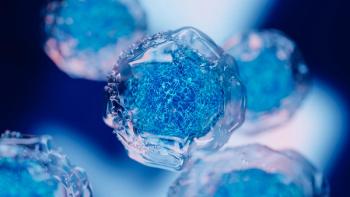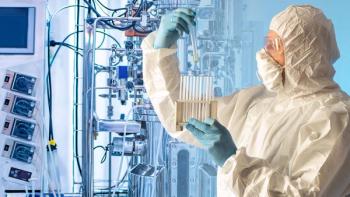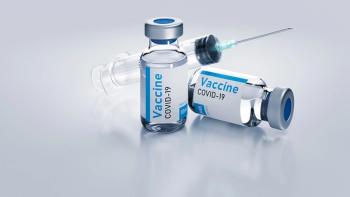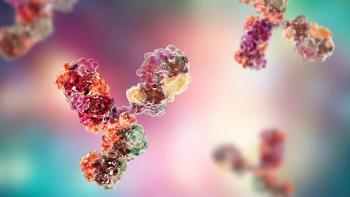
Scaling Up Disposable Membrane Chromatography
In recent years, disposable membrane chromatography has gained acceptance as a robust device for large-scale processing.
Authors: Jeff Mora is a product manager for membrane chromatography; Sherri Dolan is product manager for virus clearance; and Nathalie Fraud is a purification scientist for Sartorius Corporation, 131 Heartland Blvd., Edgewood, NY 11717, tel. 800.368.7178,
Introduction
In recent years, disposable membrane chromatography has gained acceptance as a robust device for large-scale processing. As a result, many process development scientists and associates have been introduced to membrane chromatography for the first time. Even though this technology has been available for approximately 20 years, it is still relatively new and some still struggle to understand how to treat membrane chromatography in the laboratory and at production scale. There is a good reason for this: the membrane chromatography community has developed its knowledge about how to evaluate and scale up chromatography from its experience with column-based chromatography. Fortunately, many of the principles that govern membrane chromatography are similar to the principles of column-based chromatography. There is one key difference, however: membrane chromatography can operate at high linear velocities and still maintain original dynamic binding capacities. Thus, concepts such as linear velocity, dynamic binding capacity, breakthrough, and residence time can be used with membrane chromatography. These factors are optimized and established with small-scale devices; then the factors are extrapolated with known dimensions of large-scale devices to accommodate process-scale volumes.
Applications of membrane chromatography
Membrane chromatography has demonstrated unparalleled performance for flow-through applications (1). For this reason, the biopharmaceutical market has adapted to this technology for trace contaminant removal and virus clearance applications. Anion exchange chromatography is most widely used for this unit operation and has been validated for use since 2001 (2). Figure 1 demonstrates where anion exchange membrane chromatography is used for large-scale processing. Membrane chromatography is typically used for flow-though applications for monoclonal antibody (MAb) production. Hence, this application will be used as an example of how to evaluate for performance and scale up.
Flow-through anion exchange membrane chromatography devices have proven to be economical and effective for trace contaminant removal and virus clearance (3). This unit operation is commonly referred to as a “polishing step.” Throughput is defined by measuring the amount of product that can pass through a unit volume or area of Q membrane. This throughput value (g/L of Q membrane) is determined by small-scale experiments that accurately reflect large-scale process conditions. In such experiments, the feed material has a known amount of contaminants and product. DNA, host cell proteins (HCP), leached protein A, and endotoxins are the most common contaminants that are removed by Q membranes. For polishing steps, contaminants are usually at a level in the ppm (ng/mg of product) or ppb (pg/mg of product) range; the product concentration can range from 5–10 g MAb/L.
The feed material typically is an antibody pool that is a mixture of contaminants and product. At this point in the process, the contaminant concentration should be at trace levels (<100 ppm). Contaminants bind to the positively charged Q ligands and product flows through the membrane. Initially, the flow-through pool should be devoid of contaminants. Eventually, however, the Q ligands will become saturated with contaminants, and as this saturation occurs, contaminants will be detected in the flow-through. Breakthrough has occurred when contaminants first appear in the flow-through pool. Saturation or 100% breakthrough has occurred when the concentration of contaminants (C) in the flow-through pool is equal to the concentration of contaminants in the load (Co). The process developer must determine what levels of contaminants are acceptable in the flow-through pool. Acceptable contaminant levels may range from zero breakthrough to 100% breakthrough. As a general rule, however, the HCP level should be <5 ppm and the DNA concentration should be reduced to 10 ng per dose in the final flow-through pool. These are the current specifications given by regulatory bodies (4). Of course, dose amounts range in quantity, which means that acceptable levels of DNA in the flow-through pool can be claimed only after the dose amount has been determined. For example, a high dose of MAb is 150 mg, so for every 150 mg MAb there can be only 10 ng of DNA or 67 ppb present.
Scale-up experiments
The goal of small-scale experiments is to accurately predict how much membrane will be used and how long the membrane filtration step will take during large-scale processing. The quantity of membrane is directly related to overall capacity; processing time is proportional to flow rate. The conductivity and pH of the loading buffer for this unit operation also can be determined during these experiments. As a guideline, the most effective conditions are neutral pH (0.5 to 1 unit below the pI of the product) and a conductivity of 5 mS/cm (5).
The most representative scale-down model is the best device to use for small-scale experiments. The model should have flow dynamics and materials ofconstruction that are similar to those used in process-scale devices. Scale up is linear when the scaled-down model is similar in format to large-scale devices.
A typical throughput for a Q membrane is >10.9 kg MAb/L of membrane, which translates to >10.9 g of MAb/mL of membrane; virus clearance values and trace contaminant removal are good at this throughput (6). Therefore, a 1-mL capsule can accommodate >10.9 g of MAb. Average antibody pools that are loaded onto a Q application are ~5mg MAb/mL of buffer. A 1-mL capsule can process >2,000 mL of antibody pool. The feedstock at this point in the process (post protein A and S column) typically is <98% pure (1).
Steps in conducting scale-up experiments
Most chromatography steps require prefiltration of the feed material before operation. Membrane chromatography requires the same. Thus, the load should be filtered with a 0.45- or 0.2- µm membrane filter. This prefiltration will ensure that the membrane will not foul. A sample of the load should be taken for contaminant detection assays. The 1-mL capsule can be operated with a peristaltic pump at a flow rate of 20.25 mL/min (450 cm/h). Pressure for the experiment may range from 1–3 bar. If required, a UV meter can be placed downstream of the 1-mL capsule. The UV meter will give a signal to a recording device that will measure UV wavelengths of 260 and 280 nm. The meter will not be sensitive enough to distinguish contaminants from the product. However, it can detect product and is useful for initial recovery data.
Before use, the membrane must be flushed with at least 10 MV (10 mL) of equilibration buffer. This buffer should have pH and conductivity levels that are similar to those of the load material (antibody pool). It is important that the 1-mL capsule be full of buffer after it has been flushed.
Load the antibody pool at a rate of 20.25 mL/min. Collect the flow-through pool in 100-mL sequential fractions. These fractions are used for assay detection of HCP, DNA, leached protein A, and other contaminants.
After the entire antibody pool has been processed, wash the membrane with at least 10 MV (10mL) buffer. If a UV meter is in line, wash the membrane until the signal returns to baseline. Collect the wash as another fraction.
For a thorough experiment, strip the membrane with at least 10 MV (10mL) 2 M NaCl. Collect elution as a separate fraction. The NaCl will elute bound contaminants and this step can be used to confirm the levels of contaminants that were removed. The elution will also determine if any product was bound to the membrane during the experiment.
The fractions that were collected during the load, wash, and elution steps must be assayed for contaminant removal and product recovery. Results from the load, wash, and sequential flow-through fractions should be at ppm or ppb levels. The first fractions of the flow-through should not have any contaminants. As the fraction volumes increase, there should be a point where contaminants are detected (i.e., when breakthrough occurred). Soon after breakthrough, the concentration of contaminants in the fractions will be equal to the load (100% breakthrough). Figure 2 demonstrates how these data can be plotted to create a breakthrough curve. Membrane capacity will be at a throughput volume or mass between breakthrough and 100% breakthrough. This measure depends on the acceptable contaminant level.
It is imperative to differentiate between the concentration of contaminants in the fractions and the concentration of contaminants in the entire flow-through pool. For instance, the final fraction concentration will be 50 ppm HCP in 100 mL or above maximum specifications. However, if all the fractions are pooled in 2,000 mL, the concentration will be <5 ppm or below specification.
The above example for HCP and DNA removal can be used for scale-up. The entire 2,000 mL antibody pool (5 mg/mL) had an initial HCP and DNA concentration of 100 ppm. This pool was loaded on a 1-mL membrane with a frontal surface area of 2.7 cm2. The flow-through pool had a HCP concentration of <5 ppm and a DNA concentration <5 ppb. Thus, 10 g of MAb was able to pass through 1 mL of membrane and HCP and DNA were removed to levels below specifications. The flow rate was 20.25 mL/min or 450cm/h. This information is useful to calculate how much membrane will be used in large-scale processing and how much time the unit operation will consume during large-scale processing. Below are examples of how this is carried out.
Capacity. At this point, the ratio of product per liter of membrane is known. Divide the total amount of product at large-scale by membrane capacity to determine what size device can be used:
15kg MAb/(10 kg MAb/L membrane) = 1.5 liters of membrane.
Thus, 1.5 liters of membrane can accommodate 15kg of MAb.
Processing time. In this example, the MAb pool is at a concentration of 5 mg/mL (5 g/L); 15 kg (15,000 g) total MAb yields a pool size of 3,000 liters. The frontal surface area of a 1.62-liter membrane is 4,050 cm2, and the flux is 7.5 mL/min/ cm2. To determine process flow rate, multiply the flux rate by the total frontal surface area of the large-scale device (4,050 cm2). To determine process time, divide total volume by process flow rate. Add 30 minutes for preparation and buffer flushes.
Linear flow rate also can be used to determine process time. The linear flow rate for the small-scale experiment was 450 cm/h. Use 4,050 cm2 as the divisor in the linear flow rate calculation and determine the process flow rate.
Flux method:
(7.5 mL/min/ cm2)*(4050 cm2) = 30,375 mL/min or 30.375 LPM
Linear flow rate method:
cm/h = [(mL/min)(60 min)]/surface area cm2
450 cm/h = [(X mL/min)(60 min)]/4050 cm2
X mL/min = [(450 cm/h) (4050 cm 2)]/60min
X mL/min = 30,375 or 30.375 LPM
Processing time:
3,000 L/30.375 LPM = 98.77 minutes
98.77 minutes + 30 minutes for preparation and flushes = 128.77 minutes (2 hours, 9 minutes)
Thus, this calculation shows that 1.5 L of Q membrane can process 15 kg of MAb. The initial HCP and DNA concentration will be 100 ppm. The final HCP and DNA concentrations will be <5 ppm and <5 ppb, respectively. A 1.62-L capsule should be used to process 15 kg MAb. The MAb pool will be 3,000 liters. A 1.62-L capsule will have a flow rate of 33 LPM. The entire pool will be processed in 98.77 minutes. Thirty minutes were added for preparation and buffer flushes. Thus, the total process time will be 128.77 minutes or 2 hours and 9 minutes.
Intermediate scale-up steps
In most cases, scaled-down models cannot be scaled up directly to large-scale processing devices. Therefore, intermediate process stages usually are evaluated as the project proceeds through the clinic. The process development group may work with 20–50 L production batches; the pilot scale may include 100–500-L production batches; Phase 1 and 2 may incorporate 1,000–2,000-L volumes and Phase 3/commercial production batches may range in size from 2,000 to 15,000 L. Membrane chromatography suppliers offer devices in sizes to accommodate each of these phases of development (Figure 3). This progression of volumes allows the team evaluating membrane chromatography technology to confirm results demonstrated with scaled-down models. This exercise is accomplished by loading larger volumes onto intermediate-sized membrane chromatography devices. These large volumes are a natural result of scaling up the process. Once scale-down results are confirmed with intermediate scale devices and volumes, the process development team can size membrane chromatography devices for market production with assurance.
Future applications of membrane chromatography
As membrane chromatography gains even more acceptance, the industry will begin to implement this technology for other applications. Precolumn treatment and bind-and-elute applications are on the horizon. The same evaluation and scale-up principles demonstrated in this text also apply to those applications. Initial evaluations are essential to determine if the technology meets the demands of the process. Optimizing buffer conditions may improve contaminant binding or product yield. Once the ratio of product per liter of membrane and flow rate are known, the membrane can be sized to accommodate all scales of production. When these basic concepts are understood, membrane chromatography is quite simple to evaluate and implement.
References
- Li F, et al. Current Therapeutic Antibody Production and Process Optimization. Bioprocessing J. 2005 Sept/Oct;4(5):28–30.
- Galliher P, Fowler E. Validation of Impurity Removal by the CAMPATH 1-H Biomanufacturing Process. IBC’s Biopharmaceutical Production Week, 2001 Nov 12–15, San Diego.
- Mora J, Sinclair A, Delmdahl N, Gottschalk U. Disposable Membrane Chromatography: Performance Analysis and Economic Cost Model. Bioprocess Intl. 2006;4(6):S38 –S43.
- Zhou, J, Tressel T. Basic Concepts in Q Membrane Chromatography for Large-Scale Antibody Production. Biotechnol. Prog. 2006;22:341 –349.
- Note for Guidance on Quality of Biotechnology Production: Viral Safety Evaluation of Biotechnology Products Derived from Cell Lines of Human or Animal Origin. (CPMP/ICH/295/95). 1997 Oct.
- Zhou J, et al. New Q Membrane Scale-Down Model for Process-Scale Antibody Production. J Chromatogr A. 2006; doi:101016/j.chroma.2006.08.064
Newsletter
Stay at the forefront of biopharmaceutical innovation—subscribe to BioPharm International for expert insights on drug development, manufacturing, compliance, and more.





